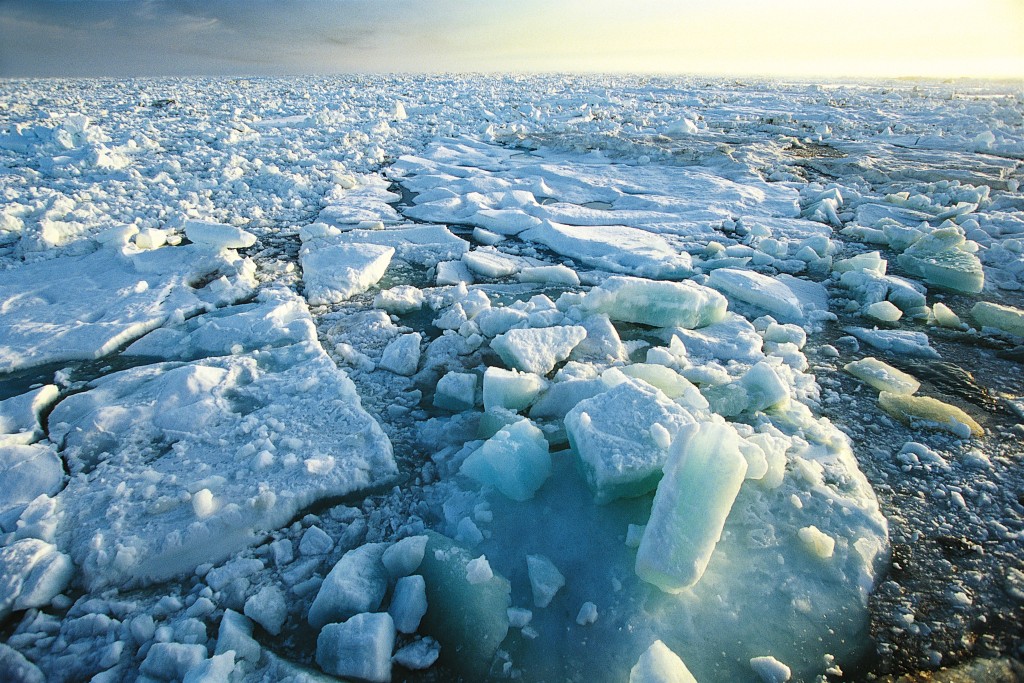CPOM scientists at Reading University have been closely involved in developing a new, more accurate forecast system to predict whether Arctic sea ice will fall to a record low level this summer, described in a study published in the journal Earth’s Future.
Arctic ice extent is already at its lowest winter level ever recorded, ahead of the big melt that takes place every spring and summer.
It has always been difficult to estimate exactly how much ice will disappear by the end of summer, but this new forecasting model based, on satellite measurements, will allow improved predictions to be made much earlier.
CPOM researcher David Schröder, one of the study’s authors, said: “Our work will allow us to accurately predict the summer minimum levels of Arctic ice in April, rather than June as is currently the case. The new forecast model takes into account far more data, such as ice concentration, and focuses on key locations that offer clues to the bigger picture.
“But the proof is in the pudding. We have already put our theory to the test using historic data, but this will be the first time it has been used to predict future melting so far ahead. The timing is apt, too, as our forecast should give a strong indication of whether we are about to see a record low summer ice extent this September.”

Arctic sea ice. Credit: ESA
Accurate forecasts of summer Arctic sea ice are valuable for shipping companies and native people that depend on sea ice for hunting, while many animal and plant species are impacted directly by changing conditions. However, uncertain weather through spring and summer make the forecasting of Arctic sea ice for a given year extremely challenging.
The new model analyses the physical characteristics of the sea ice cover as the melt season develops, to more precisely estimate if the amount of sea ice come September will be more or less than expected from the long-term trend.
The study found that the forecasts based on melt onset – the time at which sea ice starts to melt and open water appears in the Arctic Ocean – were most reliable in early spring, while sea ice coverage-based predictions were more reliable from June onwards.
The forecasts focus specifically on regions that historically correspond with how much sea ice remains come the September minimum extent. The predictions become more accurate with each passing month, as the model integrates more near-real-time information about sea ice melt and the distribution of open water areas across the Arctic Ocean and surrounding seas.
To test the model, the team went back in time and made predictions for each year of the satellite record using historical data of the Arctic sea ice conditions. They then evaluated the results against both the actual minimum extent for that year and what the long-term trend would have predicted.
Lead author Dr Alek Petty, a sea ice researcher at NASA’s Goddard Space Flight Center, said: “We found that our forecast model does much better than the linear trend at capturing what actually happened to the sea ice in any specific year. Our model is very good at catching the highs and the lows.
“The absolute values? Not exactly, but it tends to do very well at seeing when the sea ice extent is going to go up and when it’s going to go down compared to what we might be expecting for that year.”
The research also showed that models can produce reliable forecasts of sea ice not only for the whole Arctic, but for discrete regions; specifically, the Beaufort and Chukchi seas north of Alaska.
“The state of sea ice has a large impact on the Alaskan hunting communities,” Dr Petty said. “If they know ahead of time what the sea ice cover is going to be like that year, they might be able to infer the availability of the species they hunt.”
Future research will explore synthesising different sea ice measurements into the same model to improve the reliability of the forecasts.
Full reference:
A. Petty, D. Schröder, J. Stroeve, T. Markus, J. Miller, N. Kurtz, D. Feltham, D. Flocco (2017). ‘Skillful spring forecasts of September Arctic sea ice extent using passive microwave sea ice observations.’ Earth’s Future. DOI: 10.1002/2016EF000495
